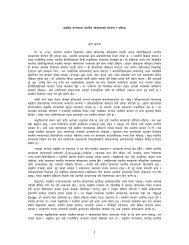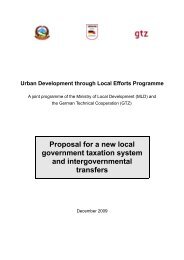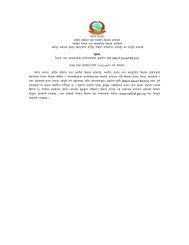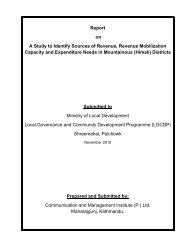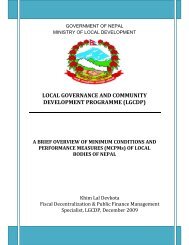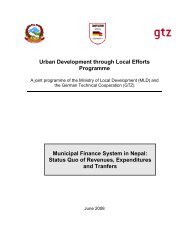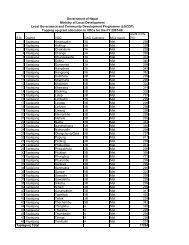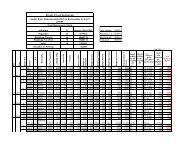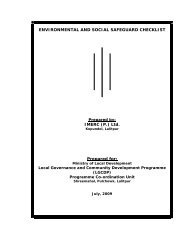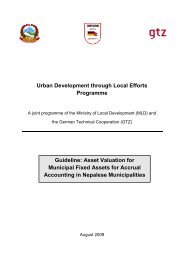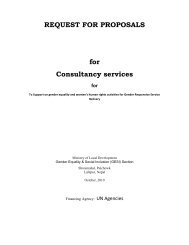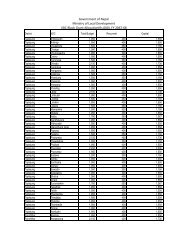GTZ Report on Accrual Accounting Status Quo - LGCDP
GTZ Report on Accrual Accounting Status Quo - LGCDP
GTZ Report on Accrual Accounting Status Quo - LGCDP
You also want an ePaper? Increase the reach of your titles
YUMPU automatically turns print PDFs into web optimized ePapers that Google loves.
Cash <strong>Accounting</strong> vs. <strong>Accrual</strong> <strong>Accounting</strong> 7<br />
2.3. The dimensi<strong>on</strong>s of <strong>Accrual</strong> <strong>Accounting</strong> – Financial Statements<br />
The dimensi<strong>on</strong>s of accrual accounting which are recommended by internati<strong>on</strong>al standards c<strong>on</strong>sist of balance, income,<br />
capital change and cash flow statements (IPSASB, 2008b; Grossi, 2006).<br />
Balance Statement of Financial Positi<strong>on</strong><br />
The balance statement of financial positi<strong>on</strong> c<strong>on</strong>sists of the different values <strong>on</strong> the debits and credits side. The debit<br />
side c<strong>on</strong>sists of floating assets and capital assets. The credits side c<strong>on</strong>sists of reserves and liabilities. On both sides<br />
<strong>on</strong>e can distinguish between current and n<strong>on</strong> current values. Through the calculati<strong>on</strong> of the difference between debits<br />
and credits side, the equity capital can be displayed. Therefore <strong>on</strong>e can see if the municipality has accumulated a<br />
deficit or a surplus.<br />
Income Statement (Operating Statement)<br />
The income statement is a sub account of the equity capital account, showing <strong>on</strong> each side of the account the<br />
revenues and expenses of a fiscal period separated according to operati<strong>on</strong>al and n<strong>on</strong> operati<strong>on</strong>al activities as well as<br />
ordinary activities and extraordinary items. On the <strong>on</strong>e hand revenues are recorded according to their source and <strong>on</strong><br />
the other hand expenses are recorded according to their functi<strong>on</strong>, nature or use. The matching principle directly<br />
c<strong>on</strong>nects expenses to specific items of revenue <strong>on</strong> the basis of cause and effect relati<strong>on</strong>ships. The result of a fiscal<br />
year, the net income or net resource c<strong>on</strong>sumpti<strong>on</strong>, is calculated through the difference between revenues and<br />
expenses. As a result, the profit or loss of a fiscal year can be displayed.<br />
Statement of changes in net assets/equity<br />
This statement records all adjustments in net assets which are for example due to necessary revaluati<strong>on</strong> of assets,<br />
past valuati<strong>on</strong> errors or changing accounting policies.<br />
Cash Flow Statement<br />
The cash flow statement is being used for the documentati<strong>on</strong>; supervisi<strong>on</strong> and steering of the cash flow and therefore<br />
ensures the liquidity and solvency of a municipality. These informati<strong>on</strong> are prerequisites for the access to loans <strong>on</strong> the<br />
capital market, e.g. if municipalities needed to cover expensive infrastructure investments partly by loan. Moreover this<br />
knowledge about solvency is also a signal <strong>on</strong> the credit market that reduces the risk and uncertainty for lenders when<br />
giving loans to municipalities.



